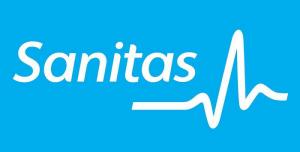The main causes of depression
One of the most well-known and common mental disorders in our society is depression. Although this mood disorder is widely known, little is said about its causes.
The reason is, among others, that this disorder cannot be explained by a single factor: its appearance and development are very complex processes. In this article we will talk about it and see, in a summary way, what is known about the causes of depression.
What is depression?
Depression is an affective disorder through which psychological pain and discomfort is expressed. This includes both psychic and somatic symptoms, so that to diagnose and apply treatment It is essential to evaluate the patient's environment (family, work, sentimental or marital situation ...).
Depression is an acute clinical disorder that affects the brain. It goes beyond feeling "down" or "sad" some days, you have to differentiate sadness from depression. The essential difference is that sadness is a natural response to a painful stimulus, this expression of emotionally manifested pain is a necessary response mechanism. However, if sadness persists over time, becoming chronic, with or without apparent cause and with severe modularity, affecting the normal functioning of the patient in all areas of their daily life, then we are referring to a depression.
Depression is not a natural response but it is a pathology that can lead to disability. Epidemiological studies reveal that for example in the United States 20% of the population suffers from this disease.
What are the causes of depression?
The main causes of depression are due to genetic factors (genetic predisposition) so it is very important to assess whether the patient has a family history.
Likewise, depressive pictures can also be due to physiological factors, as well as to the personal situation and environmental causes. We will explain each of these factors below.
1. Genetic factors
If a history of depression is found in the immediate family environment (parents and / or siblings), this can increase the chances of getting this disease from 25% to 30%. There are studies with monozygotic twins (from a single zygote that divides in two after fertilization) that show that in one of the siblings the probability of suffering from depression increases up to 50% in the case of a history in the other. The probability, however, is considerably reduced in twins (dizygotic twins), up to 25% less.
As science advances in genetics, genes have been found related to the predisposition that an individual is more or less susceptible to depression (such as: SERTs gene transporter serotonin short). It is estimated that up to 214 genes may be involved in the risk of depression.
2. Physiological factors
Depression is related to a decrease in a neurotransmitter called serotonin, specifically in the dendrites that transmit impulses from the axon of one neuron to the soma of another. For this reason, psychiatrists sometimes use a group of drugs, selective serotonin reuptake inhibitors, whose function, mainly, is to increase the predisposition of the serotonergic levels of patients with depression, the most famous of them undoubtedly the one that is marketed under the Prozac brand whose active principle is fluoxetine.
Other medications such as anxiolytics that act on another neurotransmitter can also be used: GABA (γaminobutyric acid), the anxiety is considered the sister of depression and they are generally linked to a greater or lesser extent depending on the picture, anxiolytic medications such as benzodiazepines are the most commonly used prescribe.
Other causes include endocrine disturbances, these are another of the most frequent causes with which depression is associated, among which the diabetes and hyperthyroidism.
On the other hand, it has been observed that inflammatory processes that affect the brain significantly increase the chances of developing clinical depression. This means that a wide variety of problems in the body can affect more or less indirect to mental health, because there are many biological complications that end up generating inflammations.
3. Personal factors
It is proven that the prevalence of this disease is significantly higher in the case of women, especially during pregnancy and postpartum (DPP) due to hormonal variations.
The postpartum depression (PPD) it is defined as a transient disorder that occurs between two and four days after delivery and that disappears spontaneously within a period of two weeks. There are two types of PPD, depression babyblues and the depressive disorder itself.
In medicine it is called babyblues to mild disturbance in the mother's mood, with mild depressive symptoms. It is manifested by lack of concentration, anxiety, sadness, but above all by an instability of the mood with a great tendency to cry. It does not require treatment since it disappears spontaneously after a short time.
However, in the case of PPD, symptoms appear at 12 weeks and present a more acute picture, both psychological and physical symptoms may occur, for example in the first case feelings of worthlessness may occur, suicidal ideation or thoughts related to death, and in the case of physical symptoms, these can include headache and intestinal discomfort among others. In this case, medical treatment is required.
Age is also a determining factor. The period between 35 and 45 years is the period with the highest incidence of this disease. Although it is also worth noting the depression in minors, mainly in the period of puberty and adolescence, age in which we experience very important hormonal changes while psychologically we define ourselves as people. In the case of depressive behaviors during childhood, it is necessary to pay more attention since it can have a very different manifestation from the of adults and is sometimes camouflaged under other types of disorders, however it is extremely important to pay special attention to the family.
4. Environmental factors
Environmental causes are considered all those external stimuli that influence the person and that can act as catalysts for depression.
Negative situations, family and / or work, can produce stress and trigger depression, especially if the person has a history of alcohol dependence or drug use. The poor relationship with other people, as well as the difficulty of communicating and isolation are key factors that enhance the probability that an individual develops a picture of depression.
Bibliographic references:
- de Zwart PL, Jeronimus BF, de Jonge P, et al. (October 2019). Empirical evidence for definitions of episode, remission, recovery, relapse and recurrence in depression: a systematic review. Epidemiology and Psychiatric Sciences. 28 (5): 544–562.
- Köhler-Forsberg, O.; Lydholm, C.N.; Hjorthøj, C.; Nordentoft, M.; Mors, O.; Benros, M.E. (2019). Efficacy of anti ‐ inflammatory treatment on major depressive disorder or depressive symptoms: meta ‐ analysis of clinical trials. Acta Psychiatrica Scandinavica, 139 (5): pp. 404 - 419.
- Kotov R, Gamez W, Schmidt F, Watson D, et al. (2010). Linking "big" personality traits to anxiety, depressive, and substance use disorders: a meta-analysis. Psychological Bulletin. 136 (5): pp. 768 - 821.


